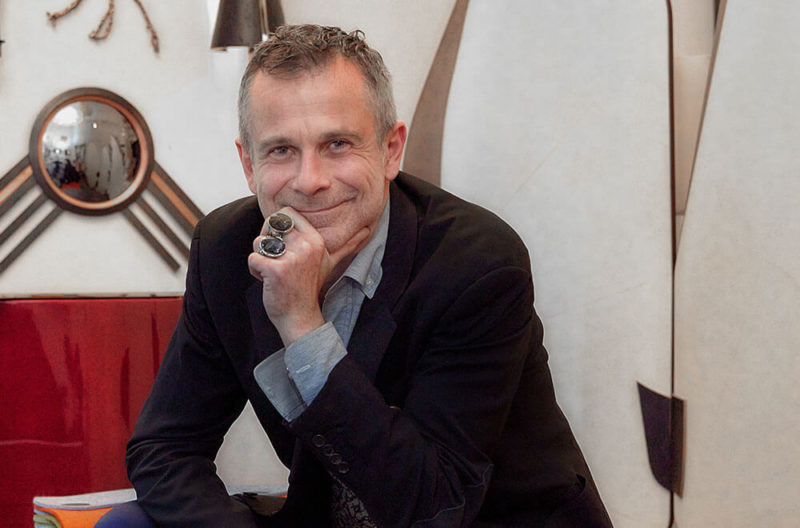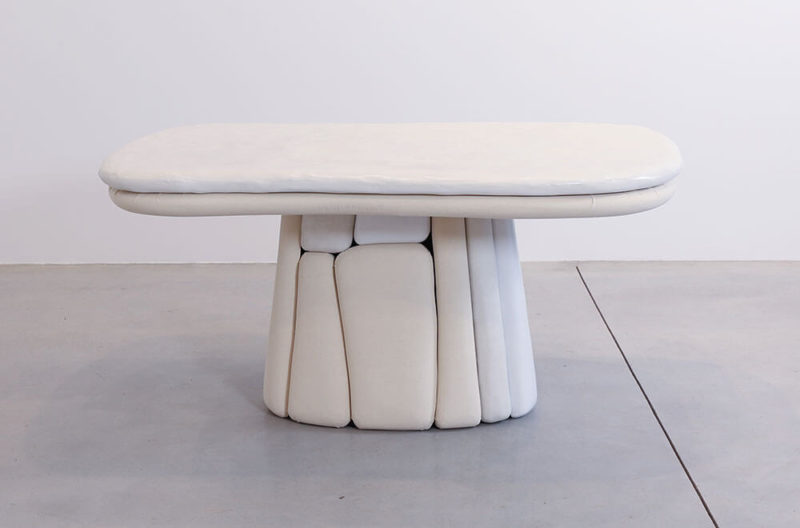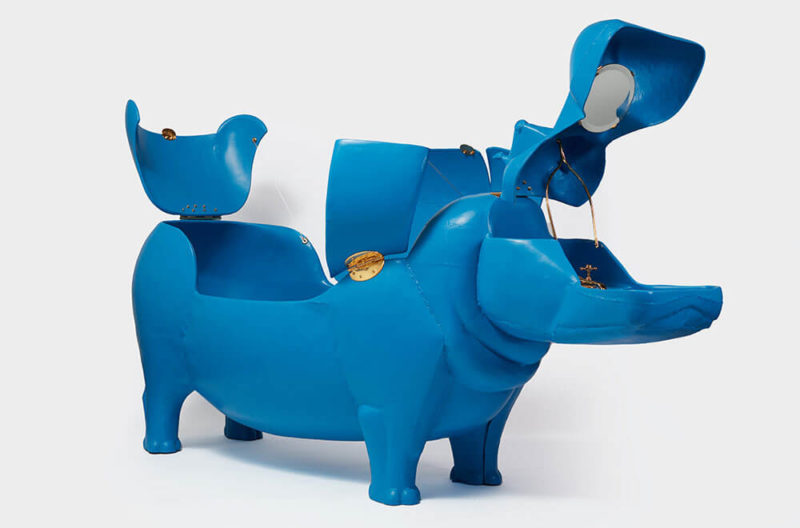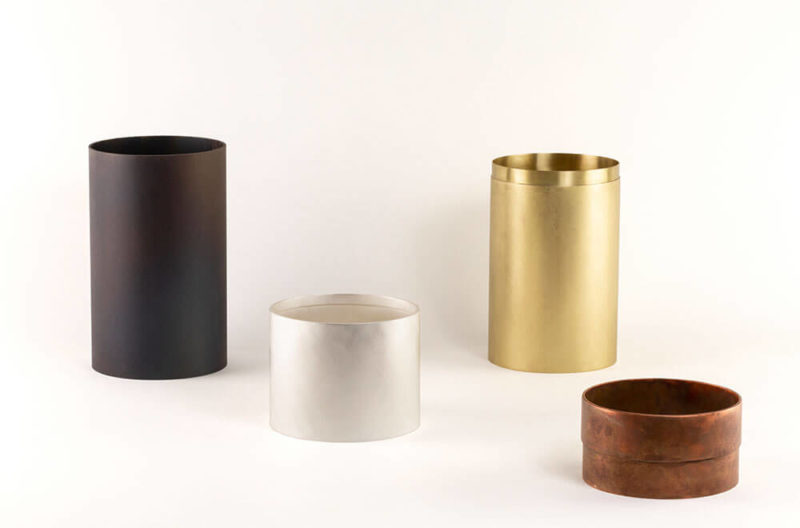Héritages
Newly commissioned collectible design staged in La Cité Radieuse, a modernist housing block designed by Le Corbusier, in Marseille.
Galerie Philia: Héritages
La Cité Radieuse, Marseille
Until 2nd July 2022

Pietro Franceschini, ‘Licitra Chair’, 2022
COURTESY: Galerie Philia & Le Corbusier Foundation © FLC A.D.A.G.P, Paris, 2022 © Lodoclick
GALERIE PHILIA HAS earned a reputation for its unconventional approach to exhibition-making, popping up in atypical places to stage nomadic shows and artists’ residencies.
Over the last two years, the itinerant gallery has used historical buildings in Venice and Florence, castles in France and even a rooftop in Mexico City, among other venues. Now it has opened an exhibition, ‘Héritages’, in La Cité Radieuse, a modernist housing block designed by Le Corbusier which is inscribed on UNESCO’s World Heritage list, in Marseille.
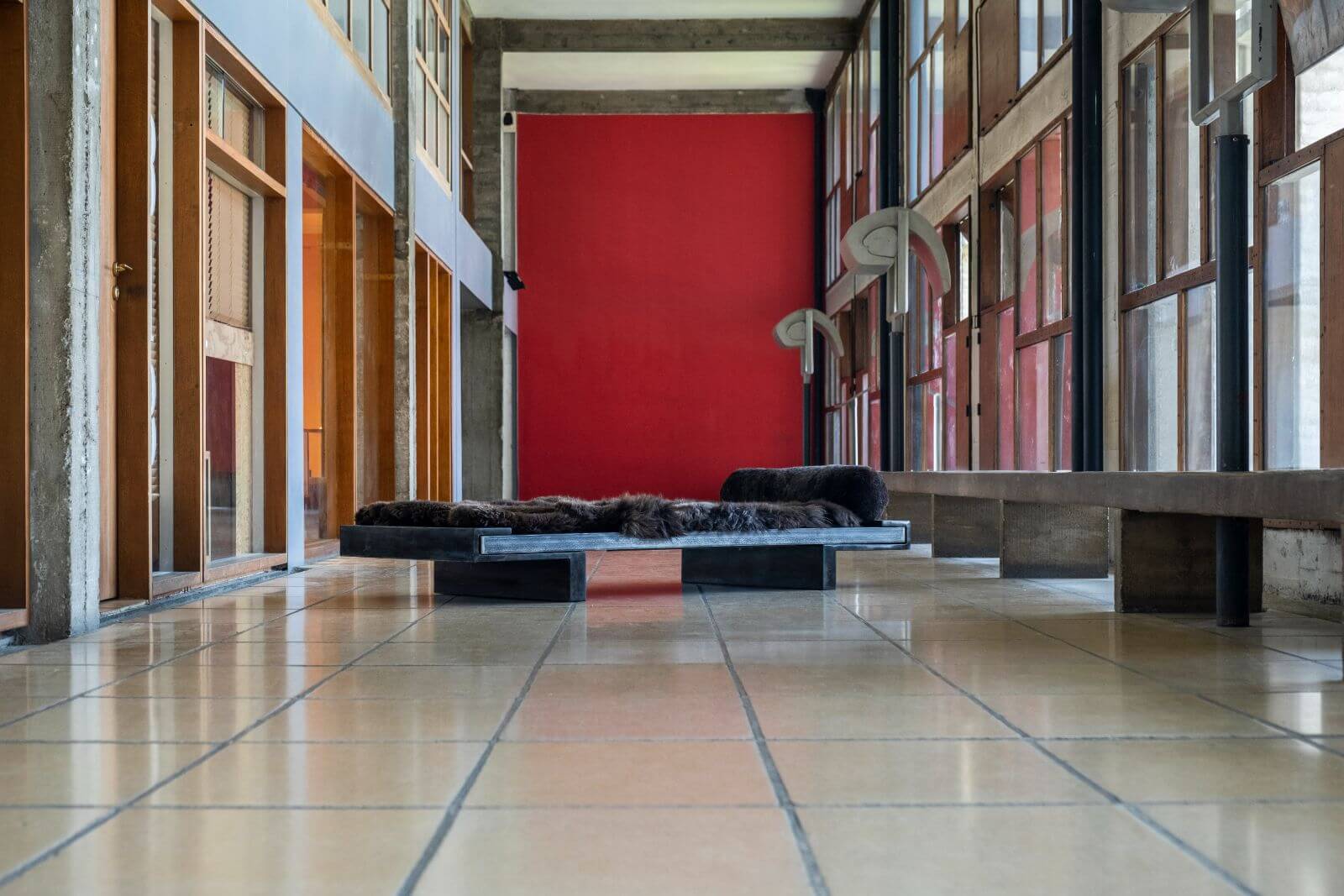
Exhibition view, ‘Héritages’ with Arno Declercq, ‘Daybed’, 2022
COURTESY: Galerie Philia & Le Corbusier Foundation © FLC A.D.A.G.P, Paris, 2022 / PHOTOGRAPH: Maison Mouton Noir
“When I first visited La Cité Radieuse as a child, I was very impressed and fell in love with Le Corbusier,” Ygaël Attali, co-founder of Galerie Philia, says. “And when I rediscovered the building with the eyes of an adult and curator, I paid more attention to all the colours, details, architectural inventiveness and radicality. Le Corbusier was first of all a theoretician and applied his theory to architecture and urbanism.”
La Cité Radieuse was the first Unité d’Habitation – or housing unit – designed by Swiss-French architect Charles-Edouard Jeanneret, better known as Le Corbusier. Constructed between 1947-1952, the eight-story housing block was commissioned after the Second World War for families that had been bombed out of their homes.
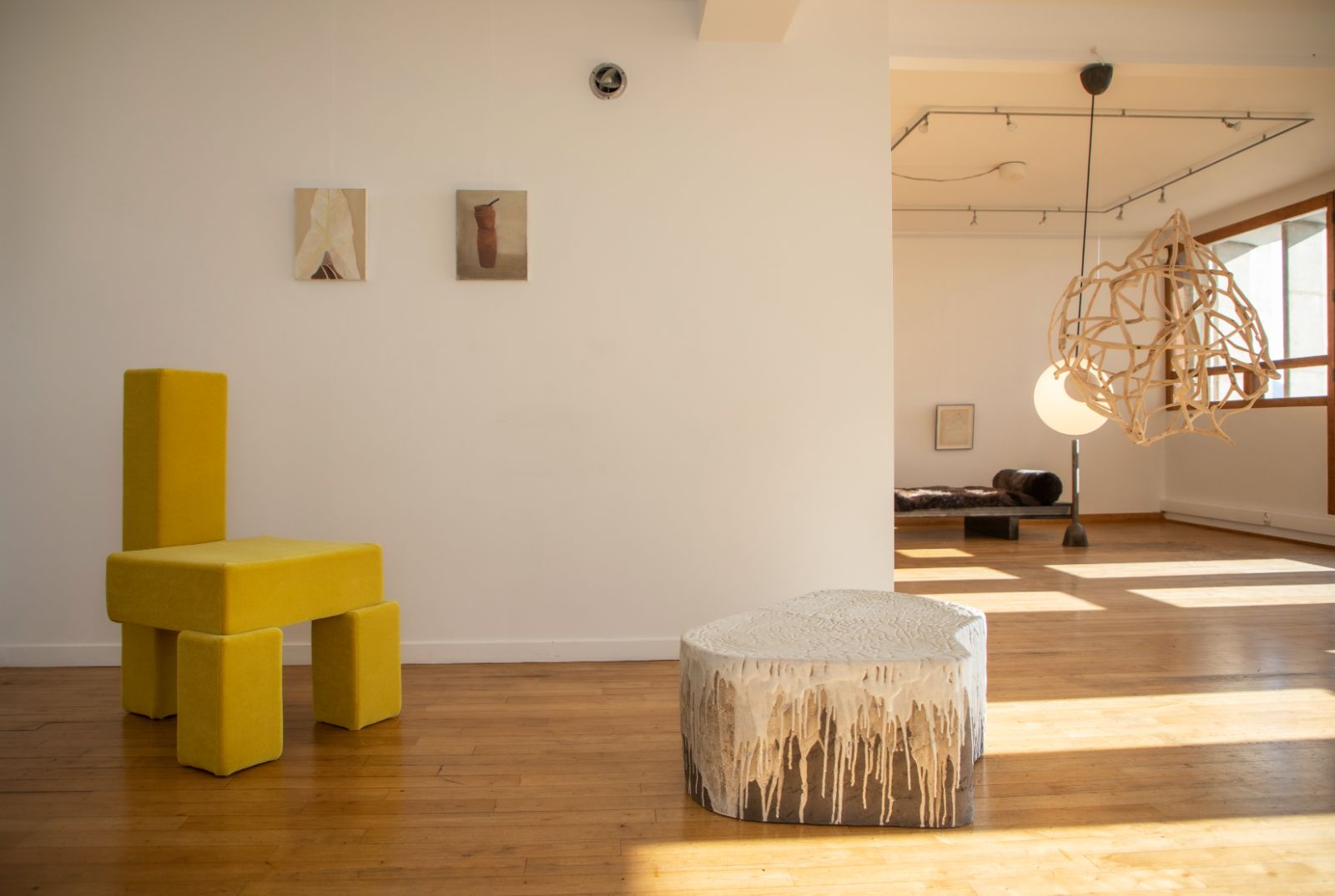
Exhibition view, ‘Héritages’
COURTESY: Galerie Philia & Le Corbusier Foundation © FLC A.D.A.G.P, Paris, 2022 © Lodoclick
Made of concrete and standing on stilt-like columns, or pilotis, and having a scintillating facade with brightly coloured panels, Le Corbusier envisioned La Cité Radieuse as a “machine for living” and “vertical village”. The height of each of the 337 apartments is based on his “Modulor” concept of a man of 1.83cm, or 6′ 1″, raising his hand upwards to touch a ceiling. Derided by some, celebrated by others, the Brutalist edifice is still inhabited today and includes a library, small cinema, vegetable garden and exhibition hall.
Galerie Philia’s exhibition marks the seventieth anniversary of La Cité Radieuse. “It’s on a third-floor space belonging to [Galerie] Kolektiv 318,” Attali says. “We commissioned pieces from the designers, inviting them to reflect on Le Corbusier’s heritage.”
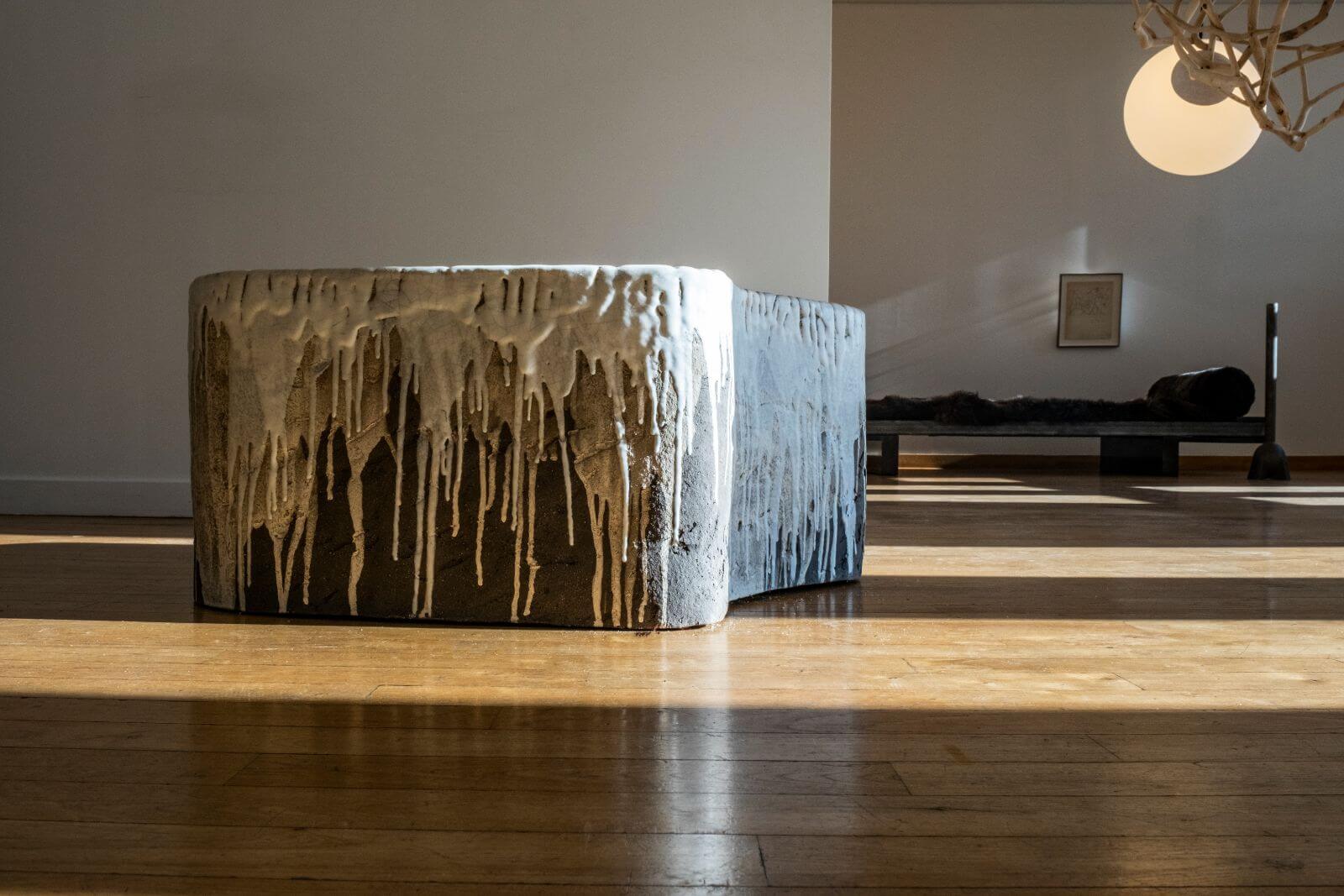
Exhibition view, ‘Héritages’ with Jojo Corväiá, ‘Charles Édouard’ table, 2022
COURTESY: Galerie Philia & Le Corbusier Foundation © FLC A.D.A.G.P, Paris, 2022 / PHOTOGRAPH: Maison Mouton Noir
The curatorial selection brings together sculptural and artisanal works, some exploring environmental issues. What emerges is that while some designers pay tribute to Le Corbusier’s legacy, others challenge his rigorous ethos.
At the entrance, next to a window screen with circular patterns, is a burnt brass and patinated iron light by Paul Matter, a studio set up by Nikhil Paul in New Delhi. Titled ‘Envol’, it swivels on its axis, the two ends dancing in the space. According to Attali, it was created in response to the mathematical principles of the Modulor. Yet it disrupts Le Corbusier’s strict calculation by conveying a more liberating spatial vision.
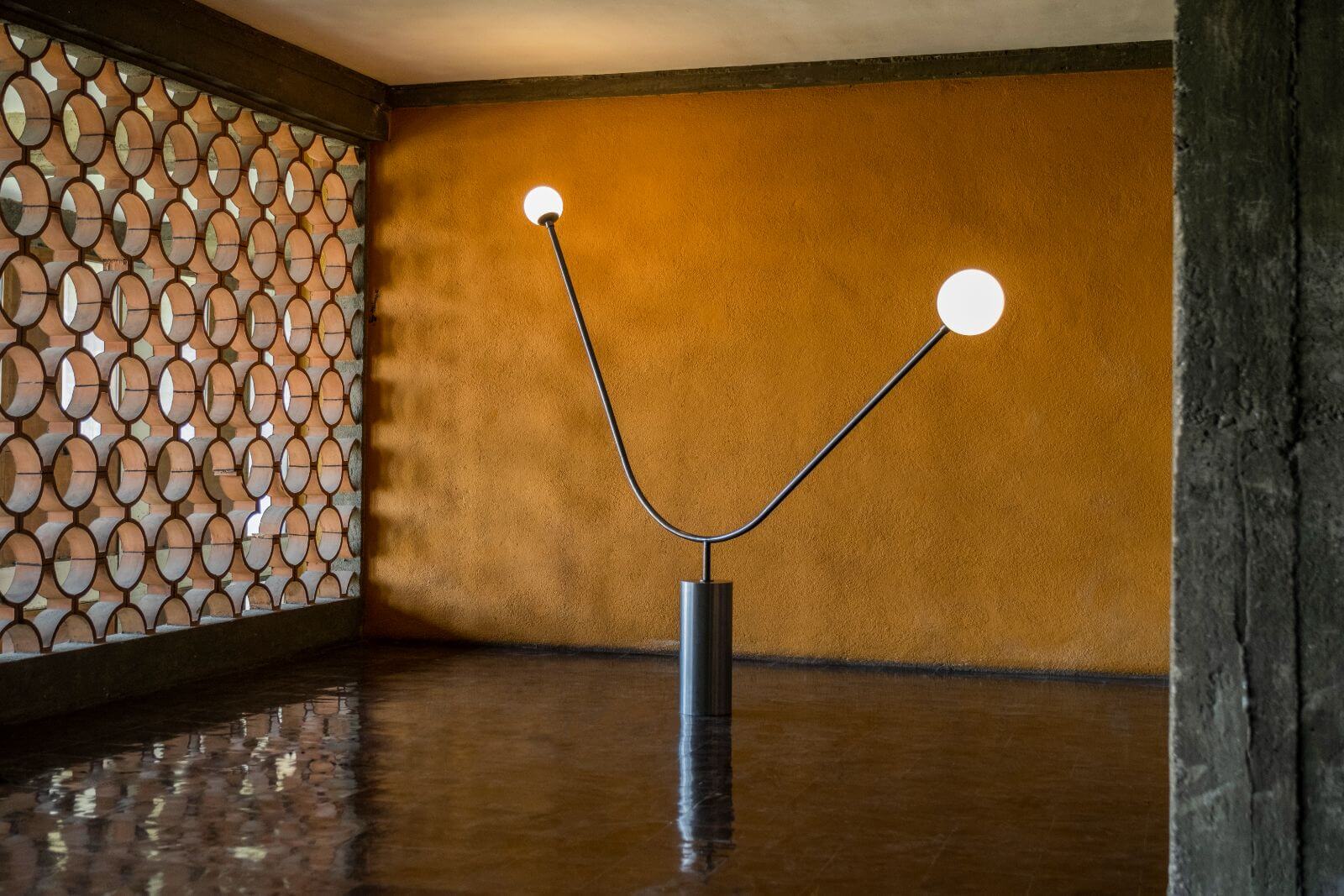
Exhibition view, ‘Héritages’ with Paul Matter, ‘Envol’, 2022
COURTESY: Galerie Philia & Le Corbusier Foundation © FLC A.D.A.G.P, Paris, 2022 / PHOTOGRAPH: Maison Mouton Noir
Further along, Arno Declercq’s minimalist steel ‘Daybed’ – presented next to an etching by Picasso – recalls Le Corbusier’s fondness for steel and refined lines. Meanwhile, Jérôme Pereira’s ‘Planck’ suspension lamp – a blown-glass element amidst a tangle of oak and wicker branches – questions, albeit tenuously, Le Corbusier’s approach to functionalism.
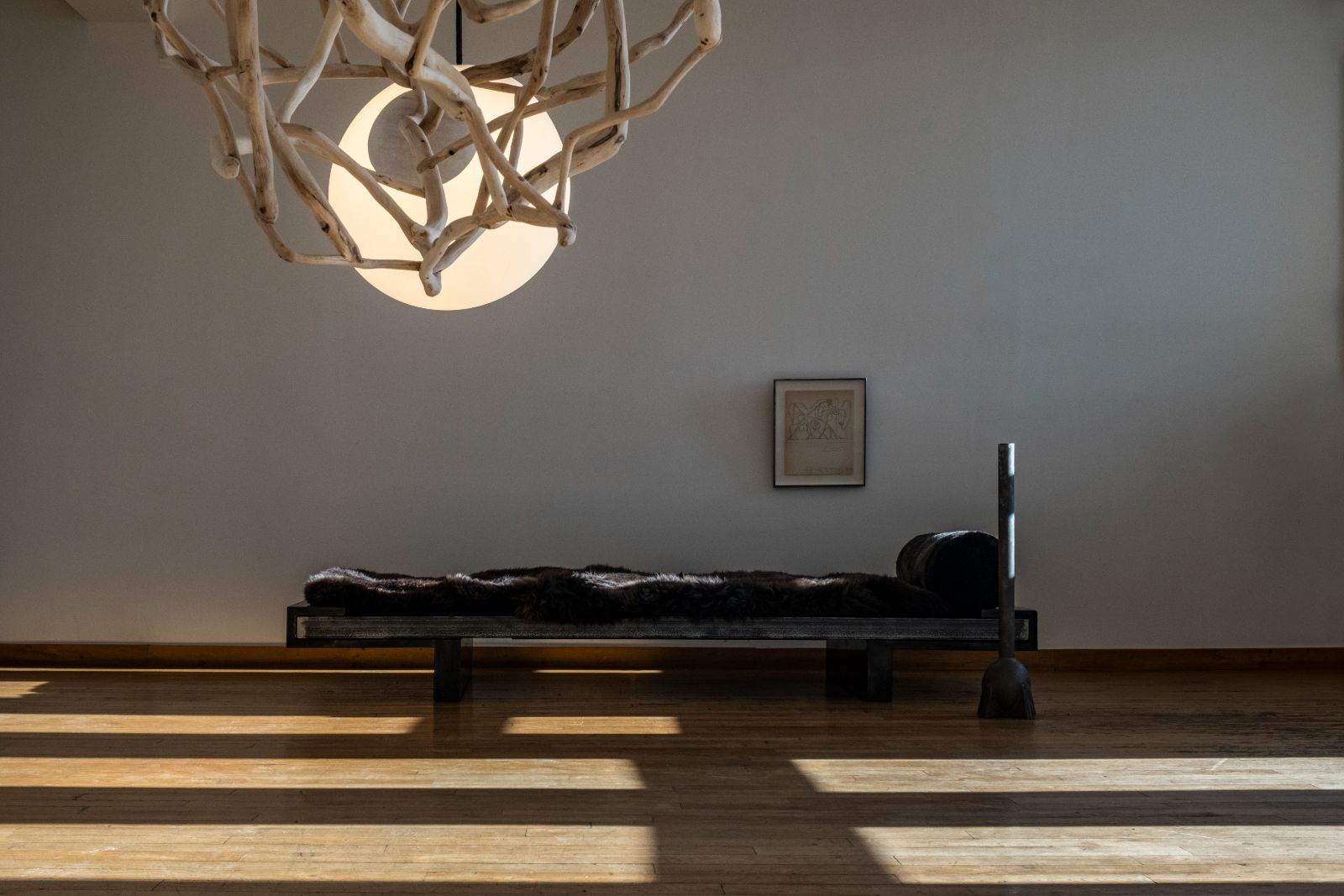
Exhibition view, ‘Héritages’ with Jerome Pereira, ‘Planck’ 2022 (foreground); Arno Declercq, ‘Daybed’, 2022
COURTESY: Galerie Philia & Le Corbusier Foundation © FLC A.D.A.G.P, Paris, 2022
Prior to the exhibition’s inauguration, several pieces are photographed on the roof terrace overlooking a mountain range. Pietro Franceschini’s yellow ‘Licitra’ chair, made in velvet mohair, resonates with Le Corbusier’s love of geometry and standardised measurements but has a playful sensuality.
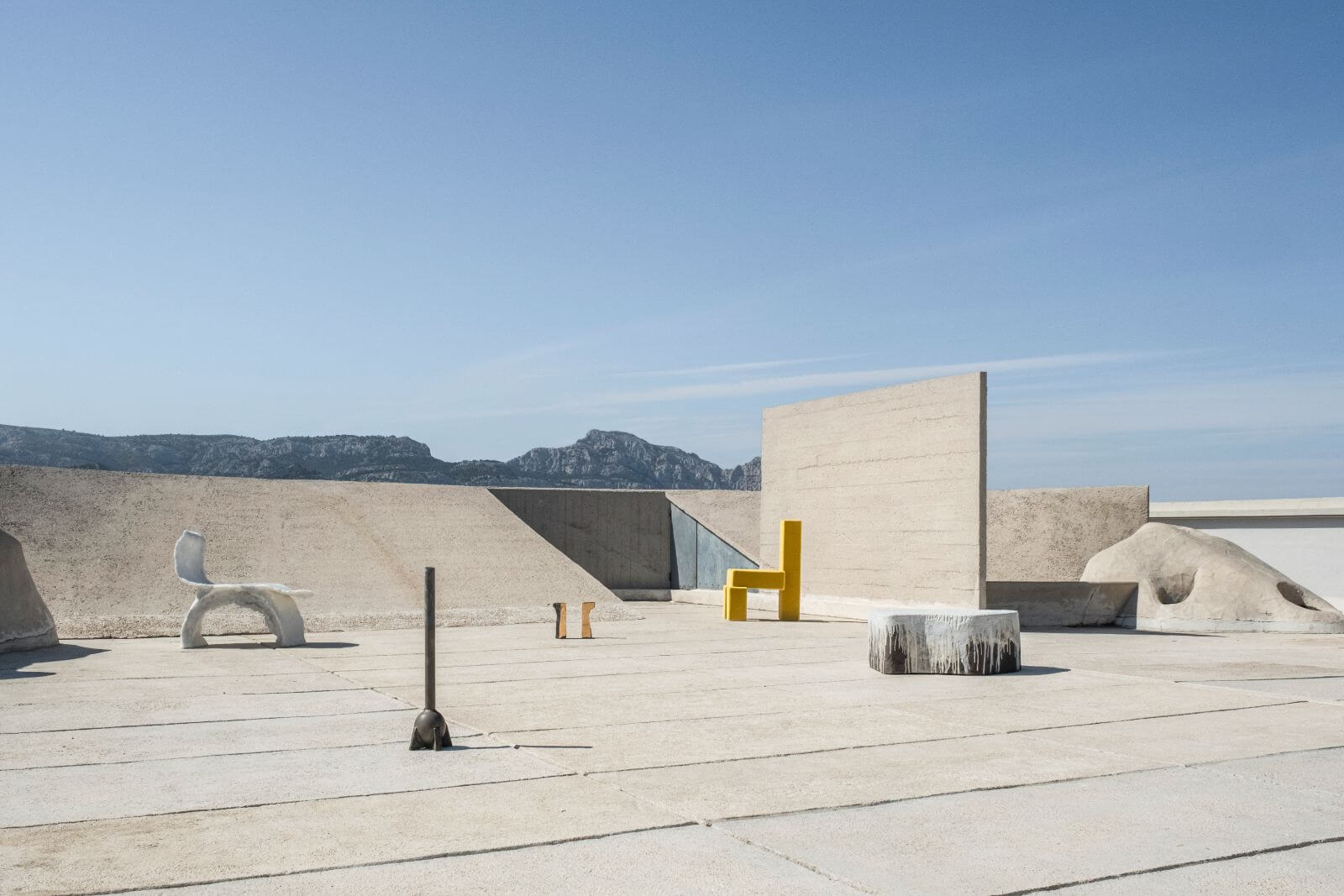
‘Héritages’
COURTESY: Galerie Philia & Le Corbusier Foundation © FLC A.D.A.G.P, Paris, 2022 / PHOTOGRAPH: Maison Mouton Noir
Another highlight is Roxane Lahidji’s ‘Psyche’s Chair’ (2022), ingeniously made from marbled salts, with an elongated seat atop an arched base. Part of Lahidji’s “marbled salts” project, started after Lahidji graduated from the social design department of Design Academy Eindhoven in 2017, it suggests how design can be organic and fragile.
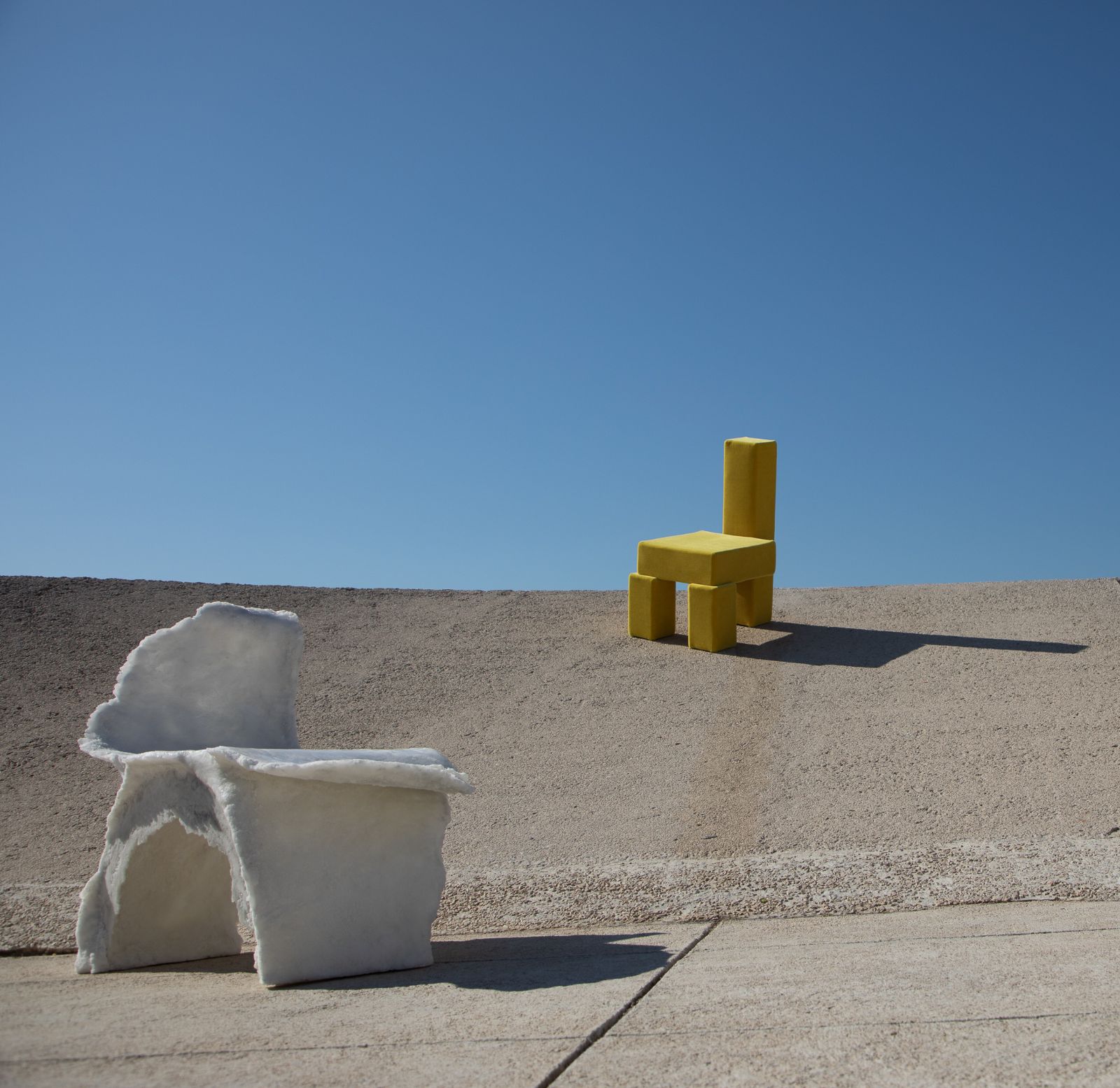
Roxane Lahidji, ‘Pyche’s Chair’, 2022 (foreground); Pietro Franceschini, ‘Licitra Chair’, 2022 (background)
COURTESY: Galerie Philia & Le Corbusier Foundation © FLC A.D.A.G.P, Paris, 2022 © Lodoclick
Installed in the turquoise-tiled pool is Jojo Corväiá’s amorphous ‘Charles Édouard’ table (2022) – made from cracked volcanic clay that has been glazed to create a streaky effect. Its irregular shape echoes the rock-like forms bordering the terrace. Other pieces – notably a bronze ‘Swan Neck’ vase by Rick Owens and candlesticks by Niclas Wolf – chime with the Brutalist character of Le Corbusier’s work.
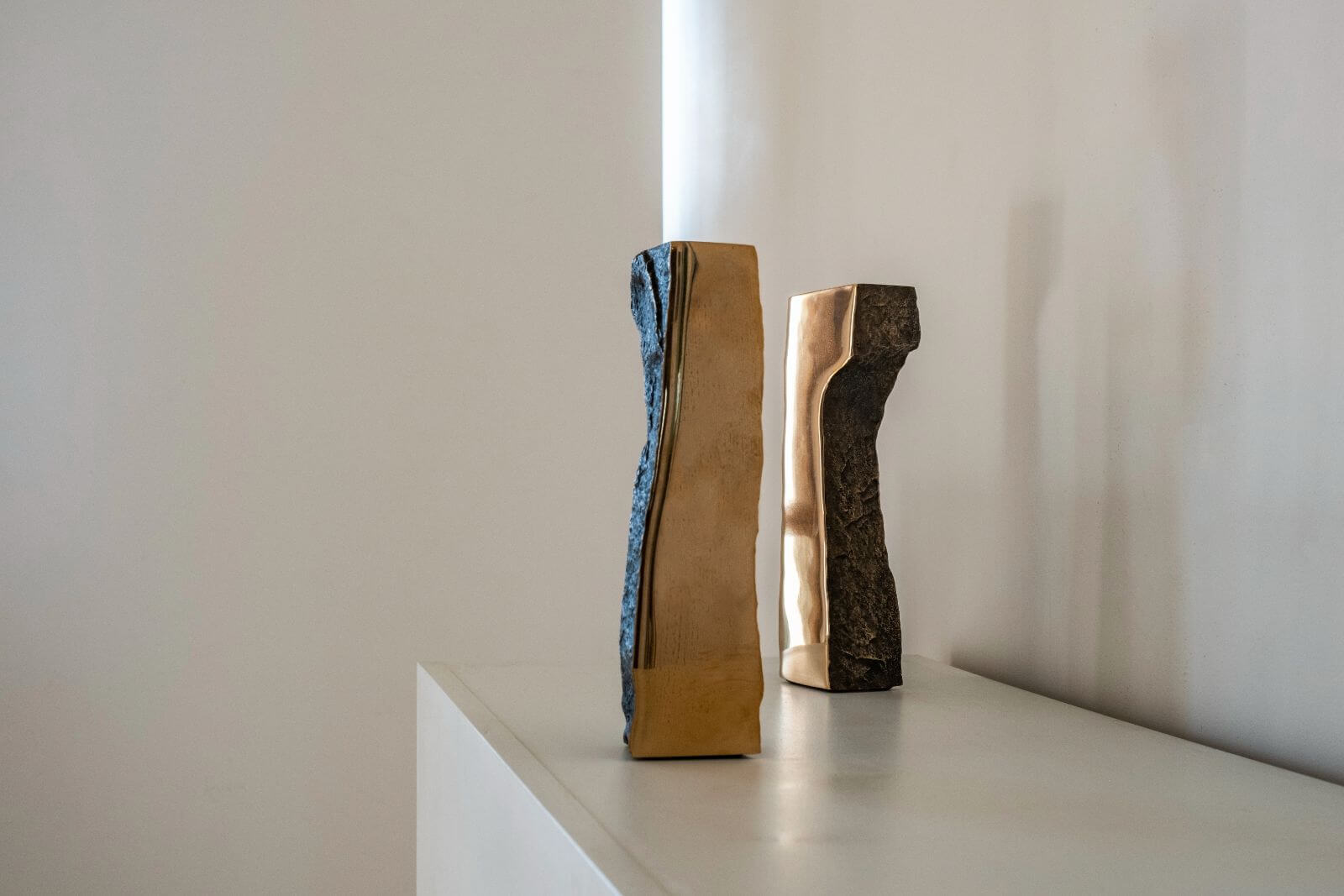
Exhibition view, ‘Héritages’ with Niclas Wolf, ‘Exsitu 005 Couple’ candlestick, 2022
COURTESY: Galerie Philia & Le Corbusier Foundation © FLC A.D.A.G.P, Paris, 2022 / PHOTOGRAPH: Maison Mouton Noir
Organising the exhibition in Marseille – hardly famous for being a collectible design destination – could be seen as a surprising move. The second-largest city in France has a high unemployment rate (up to 20 percent in some areas) and hits the headlines more for crime than culture. However, it has several museums, including the landmark Mucem (designed by Rudy Ricciotti and dedicated to European civilisations and the Mediterranean).
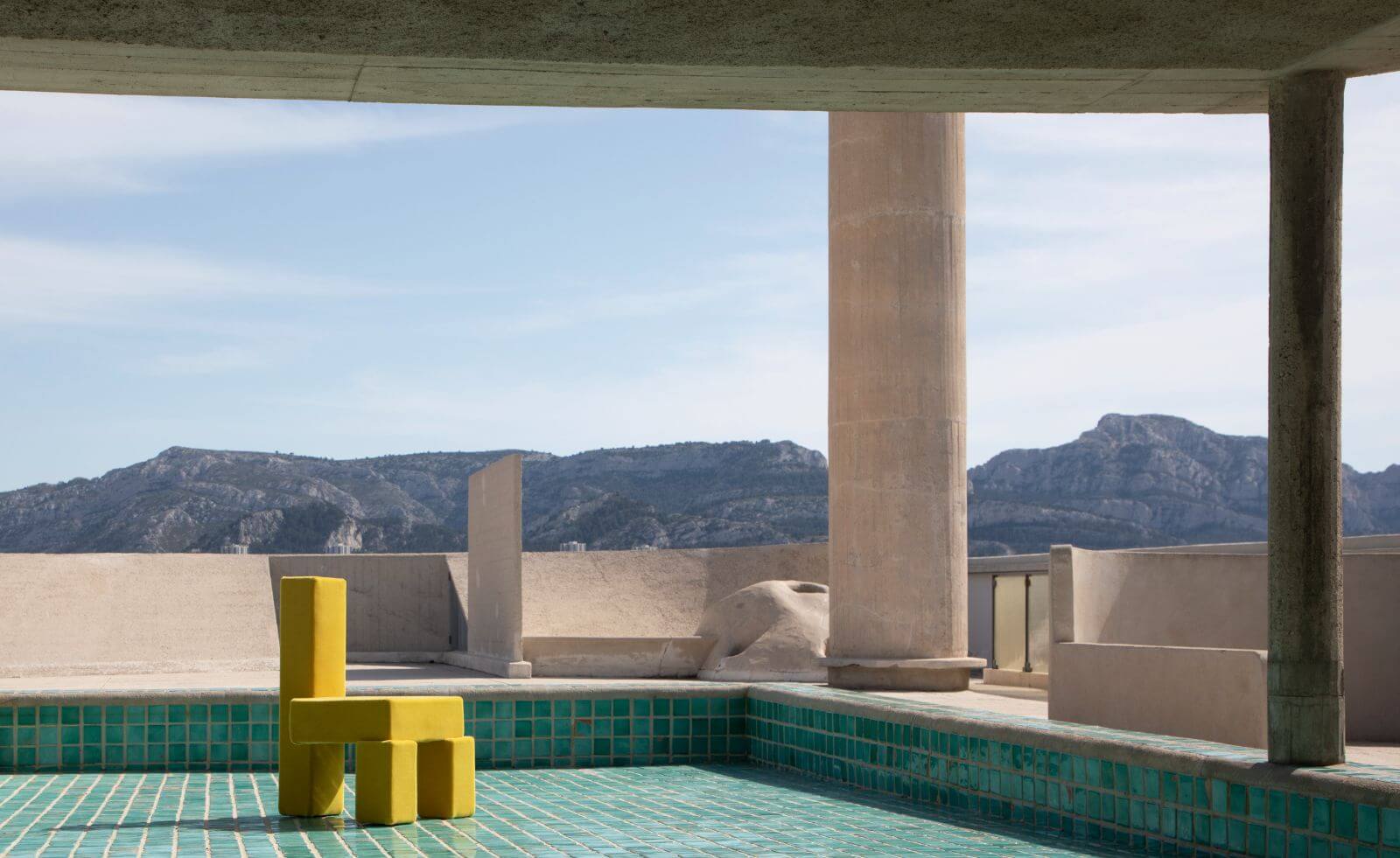
Pietro Franceschini, ‘Licitra Chair’, 2022
COURTESY: Galerie Philia & Le Corbusier Foundation © FLC A.D.A.G.P, Paris, 2022 © Lodoclick
“The collector base in Marseille is very eclectic and we’re always interested in confronting our curatorial proposals with different kinds of public,” says Attali, who is French and “based in New York, Brussels and Geneva”. He launched Galerie Philia with his Geneva-based brother, Yaïr.
While Yaïr is more involved in the investment side of the gallery, Ygaël, 32, who has a PhD in political philosophy, develops the curatorial strategy. “For us, the most important thing is the shows that we curate and the artists that we promote,” Attali says. “And the iconic building of La Cité Radieuse allowed us to weave a dialogue between the ambivalent heritage of Le Corbusier and the contemporary art and design scene.”
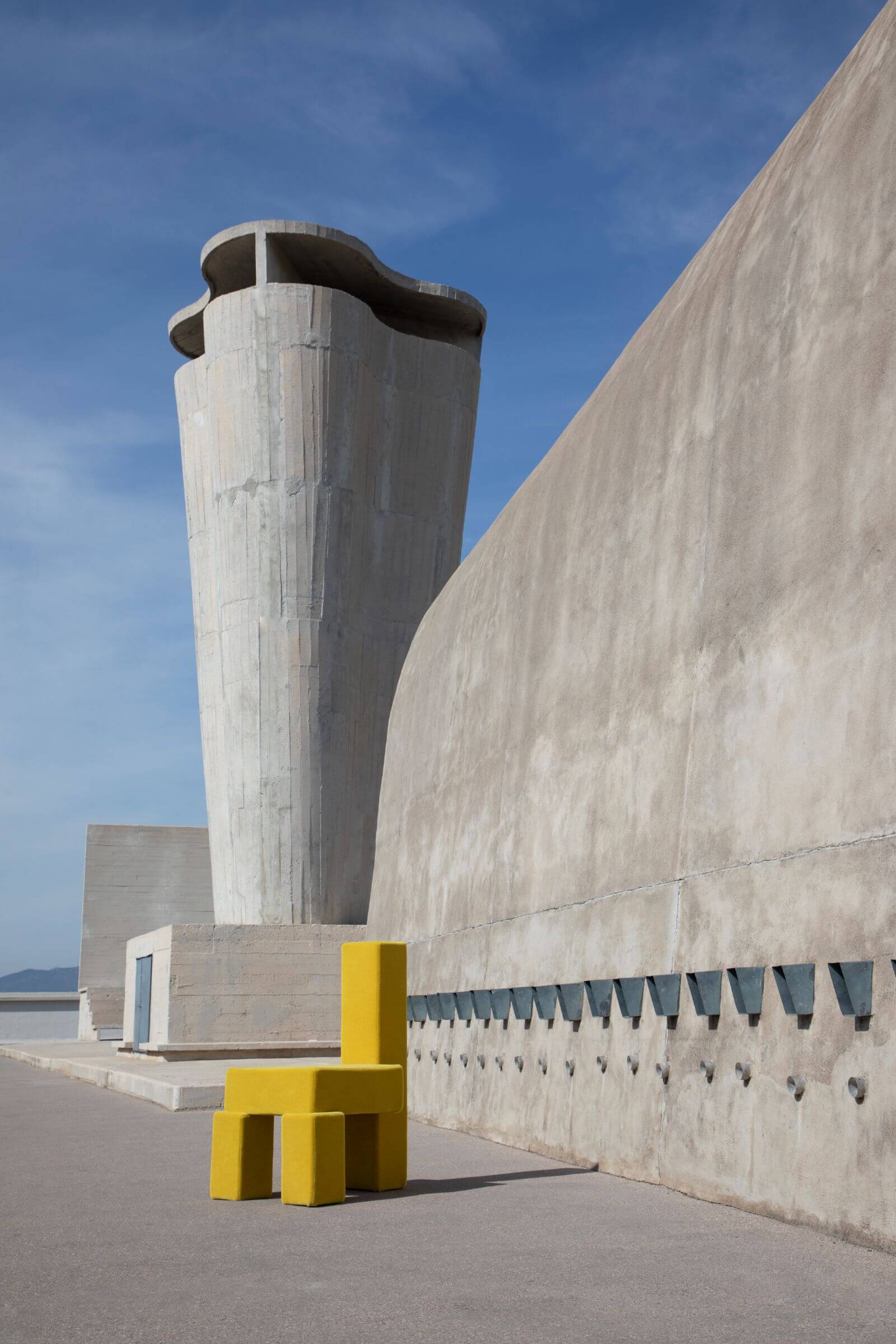
Pietro Franceschini, ‘Licitra Chair’, 2022
COURTESY: Galerie Philia & Le Corbusier Foundation © FLC A.D.A.G.P, Paris, 2022 © Lodoclick
Kolektiv Cité Radieuse, Unité d’Habitation Le Corbusier, 280 Bd Michelet, Marseille, France. From Wednesday to Saturday, 10am to 6pm.




